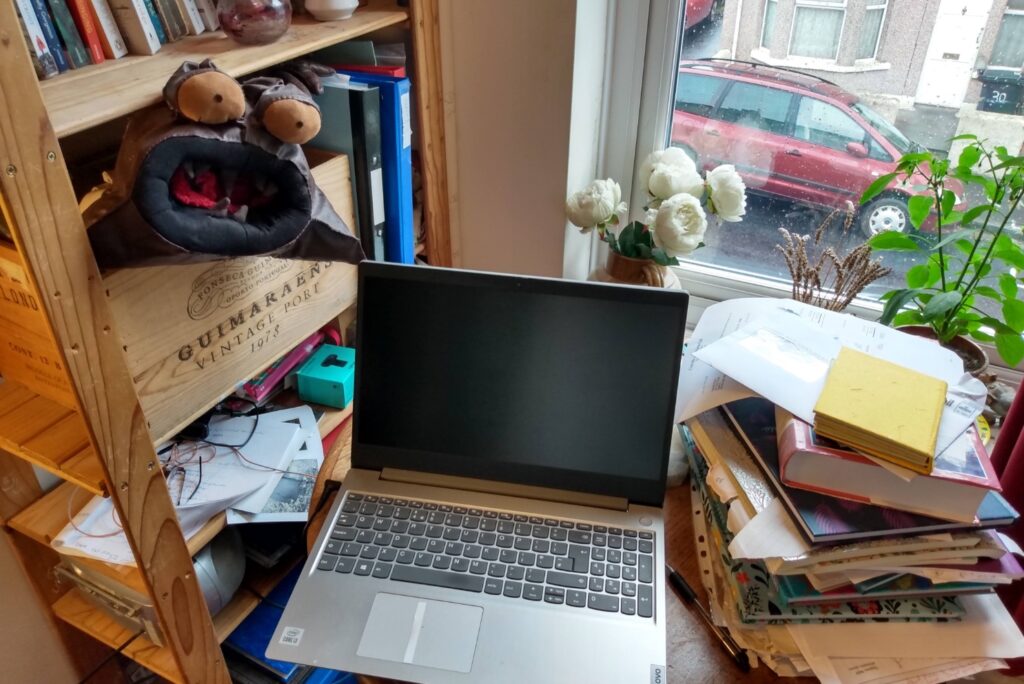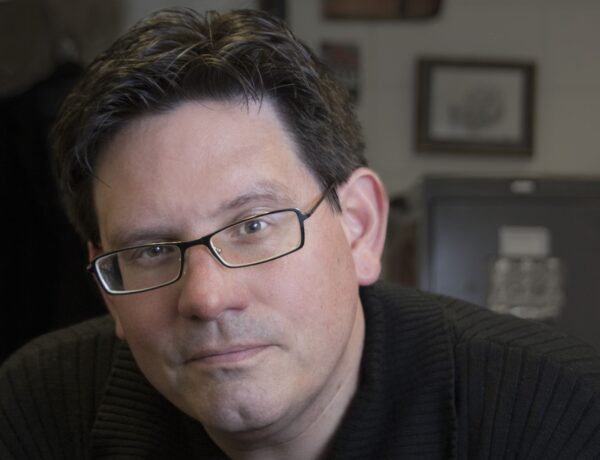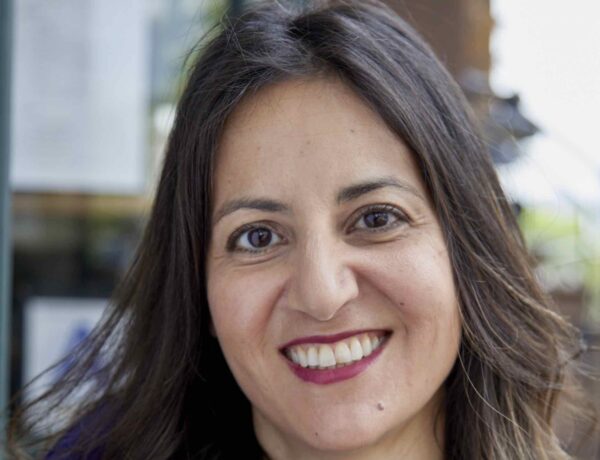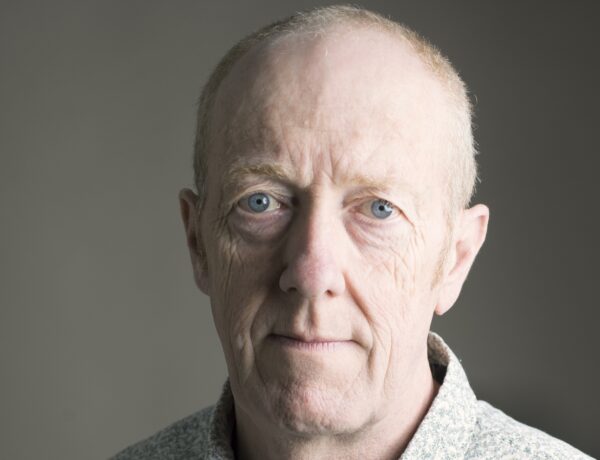Harriet’s debut novel This Shining Life was published last year by Penguin US and Transworld UK. She also writes short stories and has won first prize in the Hissac Short Story Competition and the London Magazine Short Story Competition.
She works as a registrar of births, deaths and marriages, and lives in Bristol, UK, with her partner, two sons, a cat and all the wildlife in her overgrown garden.
Each week, we publish a new daily writing routine from a famous author. Subscribe to our newsletter so you don’t miss out!
Hi Harriet, great to have you on Famous Writing Routines. For those who may not know, can you please tell us a little bit about yourself?
I’m Harriet Kline, author of This Shining Life. This is my debut novel published in 2021 by Doubleday UK and Dial Press US. Before writing this I wrote short stories, and won the London Magazine Short story competition and the Hissac Short Story Competition. I work part time as a Registrar of Births, Deaths and Marriages and I live in Bristol with my partner, my sons, my cat and all the flowers and wildlife in my overgrown garden.
What was the process of getting your first novel published? Can you run us through the gauntlet of emotions you went through?
I had to give myself a good talking to when I decided to find an agent for This Shining Life. I had made a list of the best and most suitable literary agents and then I’d crossed off the top five because I thought they were too good for me.
Luckily in a moment of daring, I added them again, and sent it off, telling myself sternly that I had nothing to lose. I’m so glad I did this as I was taken on by my dream agent, and her endorsement of my work keeps me going when my confidence falters.
I was at work when I got an email from my agent telling me that Transworld was interested. It was wonderful to share my shock and excitement with my colleagues but also quite strange to be sitting at my desk answering telephone queries about marriage law, whilst realising that a lifelong dream was about to come true.
I admit that there was, alongside the joy, a fair amount of terror. During one particularly dark night I nearly emailed my agent to ask her to cancel the deal! I learned to hold my nerve though and I still find that I have to do this, as reviews come in, and when people I admire read the book.
I absolutely loved editing. It was a wonderful feeling to have someone else’s eyes on my work and to learn from their insights. The first thing I had to do was eliminate a major character from the narrative and I thought it would be impossible.
Once accomplished though, the book was much tighter and stronger. I had initially thought this character, with her messy hair and anxious tendencies, was rather fascinating (she was based on me) but it turned out she had little to add to the story. There’s a lesson to be learned there I think!
Seeing the cover of the book was a high point of the process, finally knowing that there would be a real, gorgeous looking book with my name on it. There were low points too of course. There were times when I was convinced that nobody would read it and if they did, they’d hate it.
I still feel amazed that people I’ve never met will buy This Shining Life and are moved by it. This is the very best thing about being published, knowing that my book has touched someone’s life.
Can you take us behind the creative process for This Shining Life?
This Shining Life is about a boy who is puzzling his way through grief while the adults around him learn their own lessons about love and loss. It is a meditation on grief and there are seven distinct voices, each with their own journey through bereavement.
I wrote it after the death of a dear friend, having observed how people respond to sorrow in many different ways. The phrase that came to me when I embarked on the project was no one grieves in a vacuum. We all bring our emotional history to the process and this was what I wanted to explore.
I started by choosing my characters; first there was a dying man who must grieve the loss of his own life, and then there were all the people who loved him. I began by writing little episodes from the point of view of each character. This helped me learn about who these people really were and how they related to each other. Then I created events which illustrated their particular responses to grief.
I didn’t have a storyline at this point and was thinking more in terms of a collection of linked short stories, but the narrative arc just came to me very suddenly when I was sitting in the garden. It felt like magic, to be honest. I realised that, without being fully aware of it, I had created one character who was on a quest. This was Ollie, the 11 year old son of the dying man. His need to understand what life, death and grief were all about would draw the other characters together.
At times it felt like I was writing an utter mess of a book that broke too many rules. I wrote Ollie in the first person while the other characters were written in close third. The time lines were mixed up so that Ollie described events after the death while the other characters experienced the run up to it. Some of his chapters were also in the present tense when everything else was written in the past. I stuck with it, simply because it felt right.
Ollie’s experience of grief was very isolating and I found that writing him according to different rules really drove home the sense of his loneliness. However, it was complicated to write in this way and to draw all the threads together. I wished many times that my approach was more straightforward, and vowed to apply this lesson to my next book. Unfortunately I’m in a similar tangle with the novel I’m working on now.

What does a typical writing day look like for you?
When I can I write in the garden, even if it means bringing a hot water bottle and a blanket out with me. I find it restful to look into greenery and to feel the air on my skin. My indoor desk overlooks the street and I’m easily distracted by the activities of cats and neighbours.
I like to start writing before breakfast. I begin with my notebook, writing from the world of dreams and night thoughts. Although I don’t expect to write anything good at this point I find it useful as I can tune into what I most want to explore. This process works best if I allow myself to write utter rubbish. Sometimes I doodle or write with my eyes shut and make no attempt to make it legible. My aim at this point is to discover what needs to be said.
After breakfast I’ll write for a couple of hours and this is a good time to generate new material while I’m still feeling free and creative. I take breaks every two hours and as the day goes on the playfulness which comes from the practice with my notebook gradually diminishes. I tend to do any re-working of material in the afternoons. My breaks get longer and longer and by tea time there’s often a sensation of floppiness at the front of my brain which means it is time to stop.
Do you have a target word count that you like to hit each day?
In my dreams I write about 1500 words a day, and of course they are good, insightful and beautiful words. In reality it varies between 500 and 2000 and some of them are absolutely terrible. I try not to think too hard about word counts, and to focus on solving problems or creating new possibilities. The words always mount up eventually and if I start worrying about how many I’m writing the quality inevitably suffers.
Can you talk about some of your must-have writing tools?
I must have a notebook and a biro. I prefer blank pages so that I can draw pictures or write at odd angles and the pen must run smoothly so that I can write at speed. Otherwise I use a laptop with a basic free word processing programme. I use an extra large cursor so that I can find it easily when I’m writing outside.
Whenever you hit a roadblock during a writing session, what are some of the methods you use to get back into the flow of things?
I’m hitting roadblocks fairly regularly at the moment. It’s hard to tell whether it’s a problem with the project I’m working on, or a problem with my confidence. If I’m being sabotaged by negative thoughts I try to look on them kindly.
I see the negative voice as a tired or frightened child who needs comforting and who will probably work themselves into a tantrum if ignored. Sometimes I turn to my notebook and list all my fears. Then I remind myself that just because these thoughts have come to me it doesn’t mean they’re true.
If I hit a roadblock caused by a problem with the writing my first port of call is a break. Some of my best ideas come to me just as the kettle is boiling. Then I have to decide whether to spoil my cuppa by letting the water cool, or risk forgetting the idea by not writing it down on the spot. Like many other writers I find walking, cycling and cleaning behind the fridge very helpful.
There’s something about getting into a physical rhythm that seems to generate solutions. I’m also a fan of just ploughing on. I write a terrible paragraph, end it with “SAY BETTER” and move on. Sometimes, a few hundred words later it will become obvious why the original paragraph didn’t work. I can then return to it and “say better.”
What does your writing workspace look like?
I prefer to work in the garden but it’s often too cold or wet for that, so I have a little study at the foot of the stairs. The table isn’t really big enough to fit the laptop, piles of notebooks, coffee cups and, of course, the cat, so it gets to feel quite chaotic.
My source of inspiration is a monster that sits on the shelf beside me. I dreamed about this monster once and drew a picture of it which I showed to my sister. She then created it out of an old leather jacket and a car wash sponge. Its face is frightening yet sad and it represents, for me, the power of the unconscious mind.

Before you go…
Each week, we spend hours upon hours researching and writing about famous authors and their daily writing routines. It’s a lot of work, but we do it out of our love for books and learning about these authors’ creative process, and we certainly don’t expect anything in return. However, if you’re enjoying these profiles each week, and would like to send something our way, feel free to buy us a coffee!



No Comments